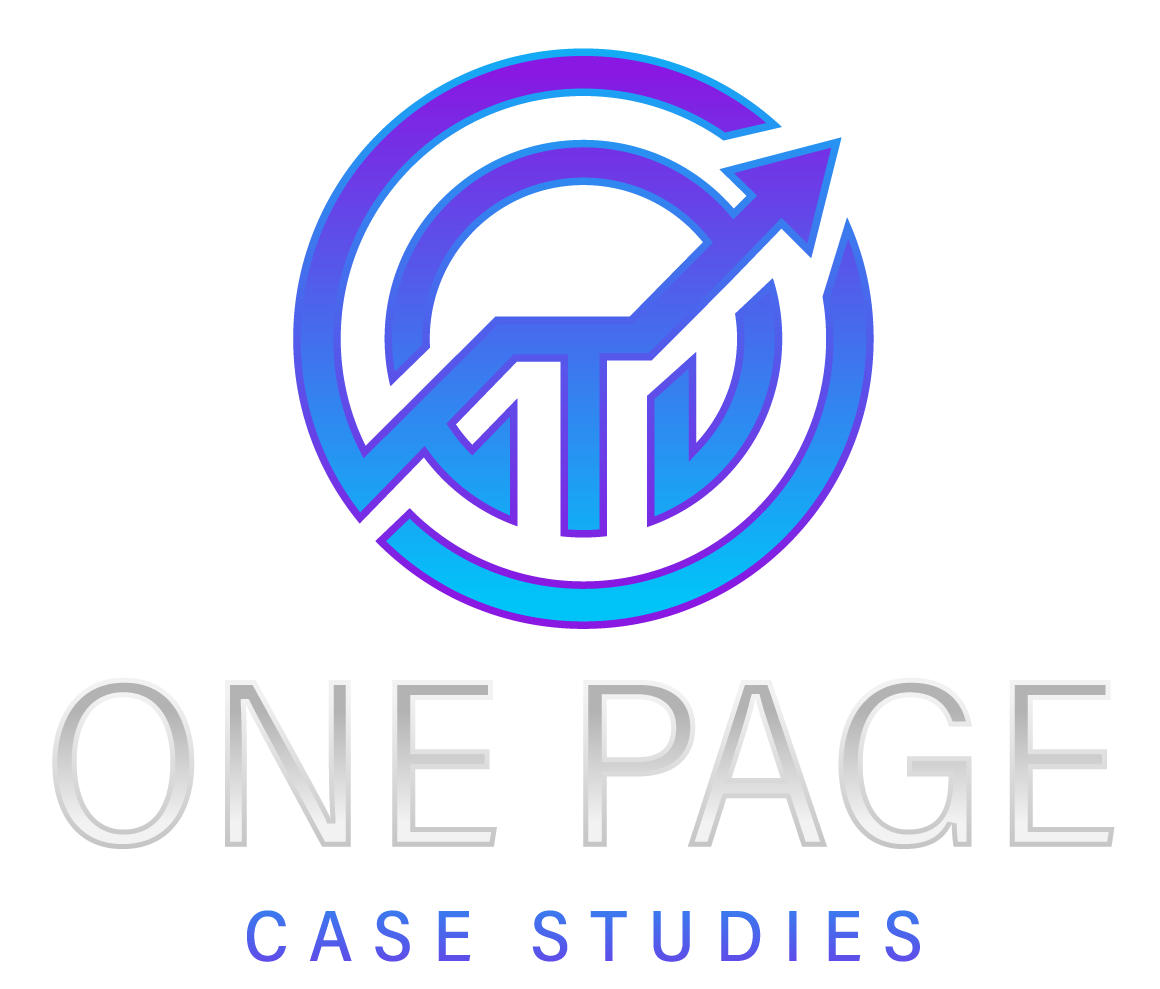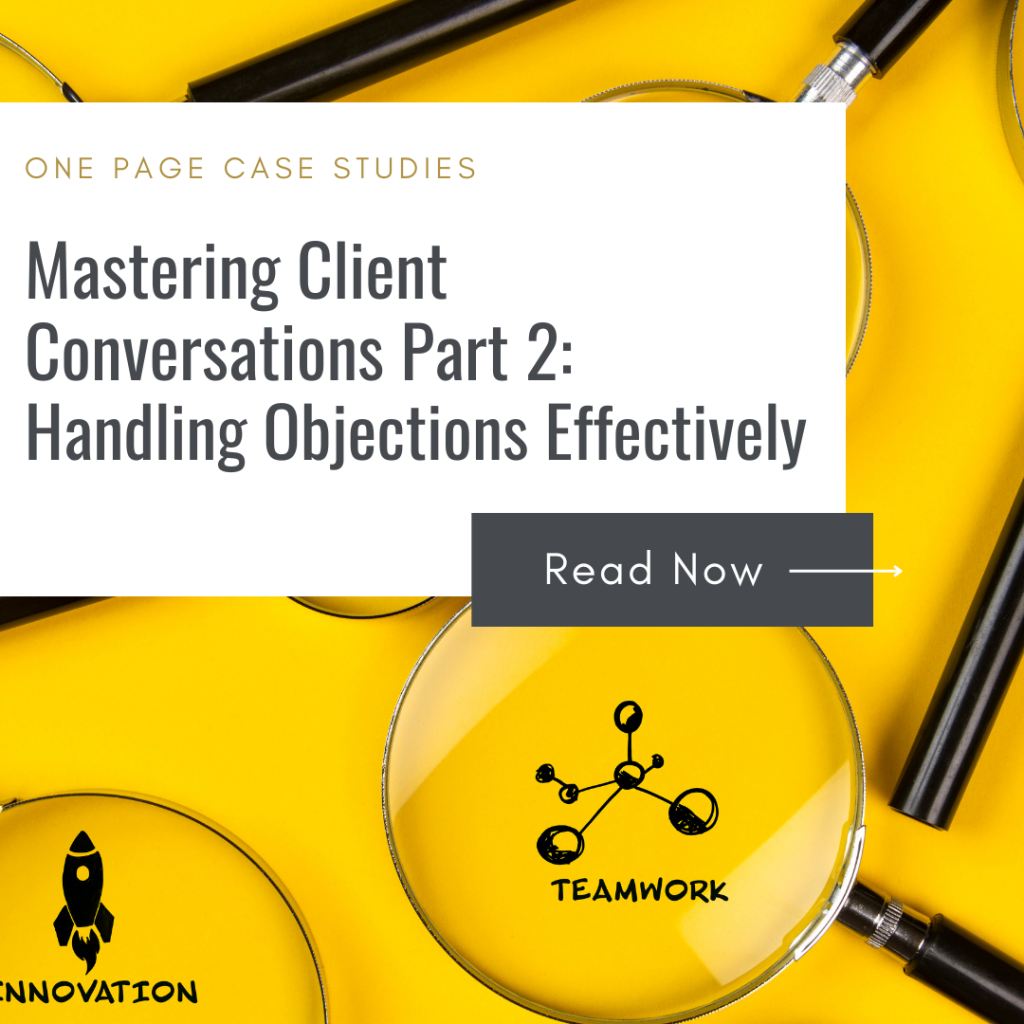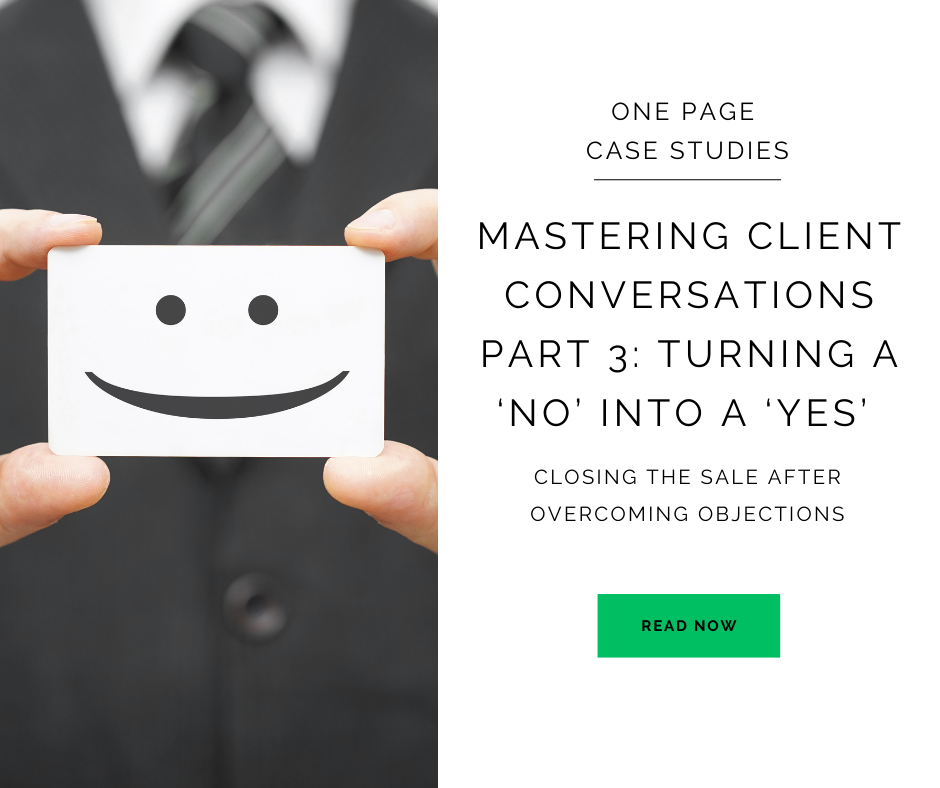Welcome to the first part of our series ‘Mastering Client Conversations: From Hesitation to Affirmation’. In this series, we will journey through the intricate dynamics of sales conversations, focusing on how to interpret underlying meanings and address client concerns effectively. We kick off the series with a deep dive into the ambiguous realm of ‘proposal requests’.
You’re on a call with a prospective client. The rapport is growing, the conversation is progressing smoothly, and you’re ticking all the right boxes.
Suddenly, you hear the phrase you’ve been waiting for – “Can you send me a proposal?”
At first glance, this might seem like a positive sign, a step towards closing a deal. However, more often than not, it’s a deflection – a polite way for the client to get off the phone or end the conversation without giving a definitive answer.
They’re not really asking for a proposal, they’re searching for an escape route.
Days turn into weeks, your proposal remains unanswered, and follow-ups meet with silence. Suddenly, that promising lead turns into a ghost, leaving you wondering where it all went wrong.
This scenario might sound all too familiar to many entrepreneurs. It leaves us questioning whether the phrase “I just need a proposal” is a genuine request, or a tactful way for the prospect to exit the conversation.
In this post, we will uncover the true intentions behind such requests, equipping ourselves with the knowledge to navigate our conversations more effectively and foster healthier client relationships.

Falling into the ‘The Proposal Trap’
A request for a proposal might initially give the impression that a client is teetering on the brink of commitment. However, reality often tells a different story. This request can be a seemingly polite and non-confrontational way for clients to signal the end of a conversation. They might not be ready to commit, or they might have unresolved objections. Rather than voicing a ‘no,’ they opt for a proposal request, effectively moving the decision into the future.
Identifying Hidden Objections
Lurking beneath a proposal request, you might find doubts, objections, or a simple lack of readiness to commit. As entrepreneurs, it’s our task to uncover these veiled concerns.
Engage with your clients on a deeper level. Ask open-ended questions that help bring their actual reservations to the surface. This approach is about more than selling a product or service; it’s about building trust and showing genuine concern for your clients’ needs.

Digging Deeper Than the ‘Proposal’ in Client Conversations
In your next sales call, resist the urge to dive straight into creating a proposal upon request. Instead, delve deeper into the subtleties of the conversation.
The key here lies in understanding the unspoken ‘no’ that the client may be giving you. Is it a ‘no’ to the price, to the timing, or to the product or service itself? Or perhaps it’s not a ‘no’ at all, but rather a ‘not now’, a ‘not sure’, or a ‘tell me more’.
Probing into these subtleties takes more than just asking the right questions; it requires actively listening to the answers, interpreting the client’s tone and choice of words, and observing any changes in their behavior or level of engagement. These are all clues that can give you a clearer picture of the client’s true thoughts and feelings.
If and when a prospect asks for a proposal, ask them what they would specifically like to see in the proposal. This not only helps tailor your proposal to their needs but also gives you the chance to address their concerns directly. It opens up the opportunity to revisit your offerings and reposition them in a way that resonates more effectively with the client’s unique needs and goals.
At this point, it’s crucial to reinforce the unique value you bring to the table and how it can help them solve their problems or reach their goals. Use this conversation as an opportunity to demonstrate your understanding of their situation and show them how your product or service can provide the solution they seek.
This deeper engagement does more than just pave the way for a proposal that hits the mark; it also builds trust and shows the client that you see them as more than just a potential sale, but as a partner you’re invested in helping succeed.
Turning Objections into Opportunities
If financial concerns are holding them back, remember that the perceived value can significantly influence investment decisions. Emphasize the benefits they stand to gain and make a compelling case for the return on investment your service provides. Keep in mind that success stories, customer testimonials, and data-driven results can powerfully demonstrate this value.

Establishing Authentic Communication
In the delicate dance of client communication, clarity is paramount. Encourage prospects to be transparent about their intentions, emphasizing that a ‘no’ can be just as valuable as a ‘yes’. Honest communication not only saves time but also fosters a healthier business relationship.
Mastering client communication isn’t about closing every deal. It’s about truly understanding your clients, reading between the lines, and addressing their concerns effectively. It’s about fostering genuine conversations that build trust, and knowing when to move forward with a proposal, and when to dig deeper.
Navigating client communication can be both a challenge and a reward. If you’ve encountered similar experiences in your client conversations, we’d love to hear your strategies and insights. Share your thoughts in the comments, and let’s learn and grow together, transforming our shared challenges into opportunities for growth. You may also join the conversation in our Facebook Group.
We hope you’ve found this exploration of client conversations about proposal requests insightful. This post is just the first step in our journey through mastering client conversations. In the next installment of this series, we’ll delve into the techniques for unmasking and addressing hidden client objections. Stay tuned!
Here is next article in this series: Mastering Client Conversations Part 2: Handling Objections Effectively



